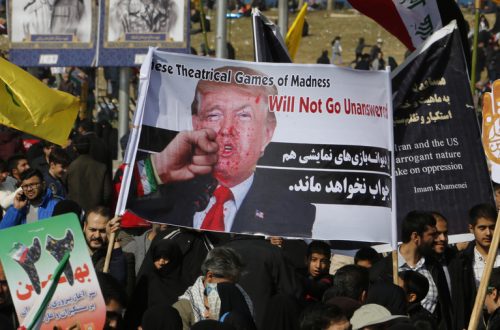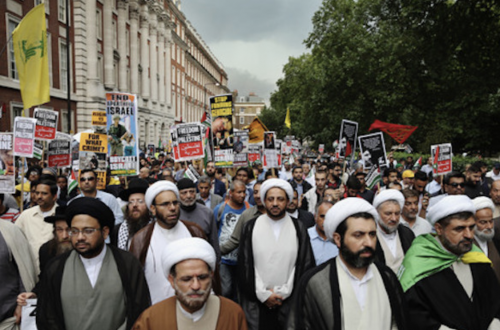This is a cross-post by Kyle Orton
The Islamic Republic of Iran released five senior al-Qaeda terrorists in March, ostensibly as part of a prisoner exchange for an Iranian diplomat kidnapped in Yemen by al-Qaeda in the Arabian Peninsula (AQAP). But the murky circumstances in which al-Qaeda’s leaders were “held” in Iran and other inconsistencies cast some doubt on this version of events, and draw attention to some old questions about Iran’s support for al-Qaeda and its affiliates and offshoots.
According to a September 14 report by Sky News, the five al-Qaeda leaders were freed—and will soon be allowed to leave Iran—in exchange for Nour Ahmad Nikbakht, an Iranian diplomat kidnapped by AQAP in July 2013 who landed in Tehran on March 5. Even on this version of events it means that the Iranian State media reports at the time, that Nikbakht was freed as the result of “intelligence operation,” were false.
Who Has Been Released?
The most important al-Qaeda leader freed by Iran is Sayf al-Adel. Regarded as al-Qaeda’s number three, al-Adel is one of al-Qaeda’s most capable military leaders. Beginning his career in the Egyptian military, before moving into Egyptian Islamic Jihad (EIJ), then led by Ayman az-Zawahiri, al-Adel was one of the masterminds behind the conspiracy that assassinated President Anwar al-Sadat in 1981. By 1988, al-Adel was in Afghanistan and remained after the Soviets left.
Iran has long had friendly relations with Egypt’s Sunni Islamists and the alliance with EIJ was further strengthened via Hassan al-Turabi in the early 1990s, after which Zawahiri was the poster-boy for Iran’s policy of ecumenical support for anti-American Islamic radicalism. Al-Adel was among those trained by Iran through the Hizballah in Lebanon in the early 1990s, going on to serve on al-Qaeda’s Shura Council and as al-Qaeda’s security chief. Al-Adel is believed to have been involved in the 1998 Embassy bombings and the butchery of Wall Street Journal reporter Daniel Pearl, though, interestingly, al-Adel seems to have opposed to the 9/11 massacre.
Al-Adel was key in convincing Osama bin Laden to maintain relations with Abu Musab az-Zarqawi, despite Zarqawi and Bin Laden having a stormy initial meeting and retaining deep difference over the “far enemy” question. Zarqawi had extensive contacts in the Levant, al-Adel argued, and this “rolodex pragmatism” would carry the day—and quickly: al-Qaeda put Zarqawi’s contacts to use for the Jordanian end of the Millennium Plot in December 1999.
EIJ had operated quite freely in Iran in the 1990s and after the NATO invasion of Afghanistan in 2001 al-Qaeda members and associates, al-Adel and Zarqawi among them, took shelter in Tehran and Mashhad, where Zarqawi was even reportedly trained by the Islamic Revolutionary Guard Corp (IRGC).
Zarqawi moved from Iran to area of Iraq controlled by Ansar al-Islam, led by Zarqawi loyalists and receiving assistance from both al-Qaeda and Saddam Hussein’s Iraq, in April 2002. The next month, Zarqawi moved to Baghdad with two-dozen senior al-Qaeda associates, including his successor Abu Ayyub al-Masri and Abu Hammam as-Suri, the head of the military for Jabhat an-Nusra (al-Qaeda in Syria), at least until he was supposedly killed in March. Zarqawi was allowed free movement in and out of Baghdad, and he conducted a tour of the Levant to set up the “ratlines” that brought foreign holy warriors into Iraq during the American regency. By November 2002, Zarqawi had taken direct charge of Ansar in northern Iraq.
Zarqawi and three-hundred jihadists were allowed to move back into Iran during the Iraq invasion, before being permitted to cross the border again later in 2003 to make war against constitutional government in Iraq. Once back in Iraq, Ansar would reassert its autonomy from Zarqawi, albeit remaining in coordination with him, and Zarqawi and his associates from the Herat camp in Afghanistan rebranded their group from Jund a-Sham to at-Tawhid wal-Jihad, which later became al-Qaeda in Iraq (AQI) and eventually the Islamic State (ISIS). An al-Qaeda network maintained on Iranian soil, of which al-Adel was a senior member, was an important logistics and supply base for AQI.
From Iran, in collusion with Zarqawi, al-Adel organized the bombing of Riyadh in May 2003, after which the Iranian theocracy ostensibly placed al-Adel under some form of arrest, the terms of which were never made clear. Al-Adel was reported to have been released in a previous prisoner swap in 2010. After Bin Laden was struck down, it is said that al-Adel was theinterim leader of al-Qaeda—which couldn’t have happened if al-Adel was truly detained. Several reports in the summer of 2011 said Tehran had allowed al-Adel to travel between Iran and Pakistan.
Do read the rest of Kyle’s post here


